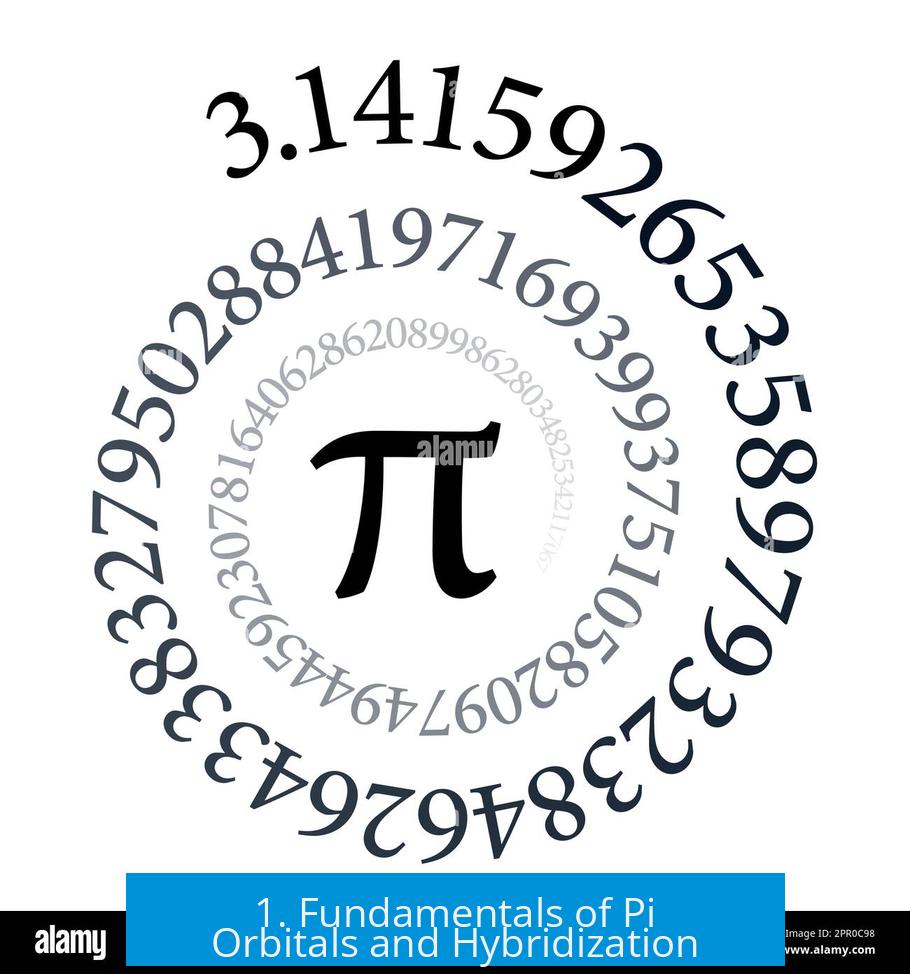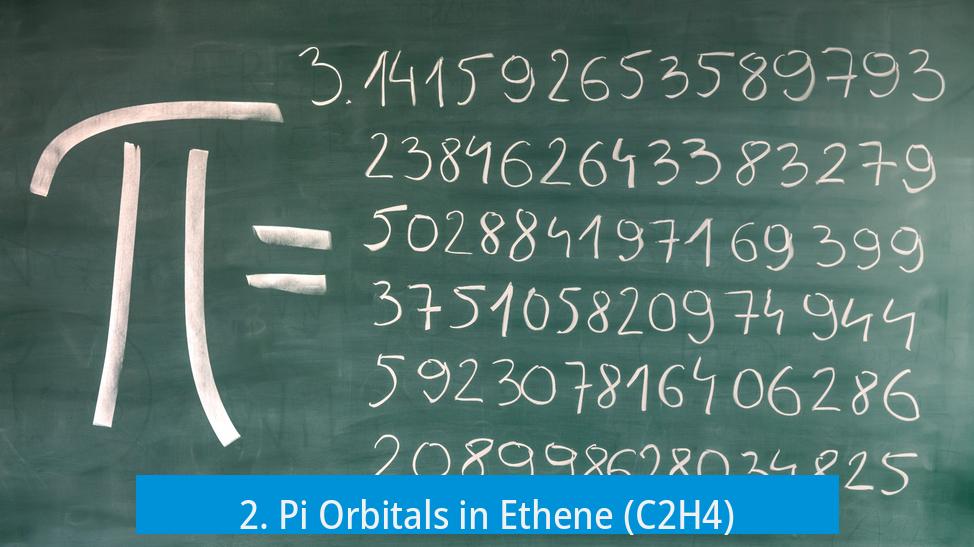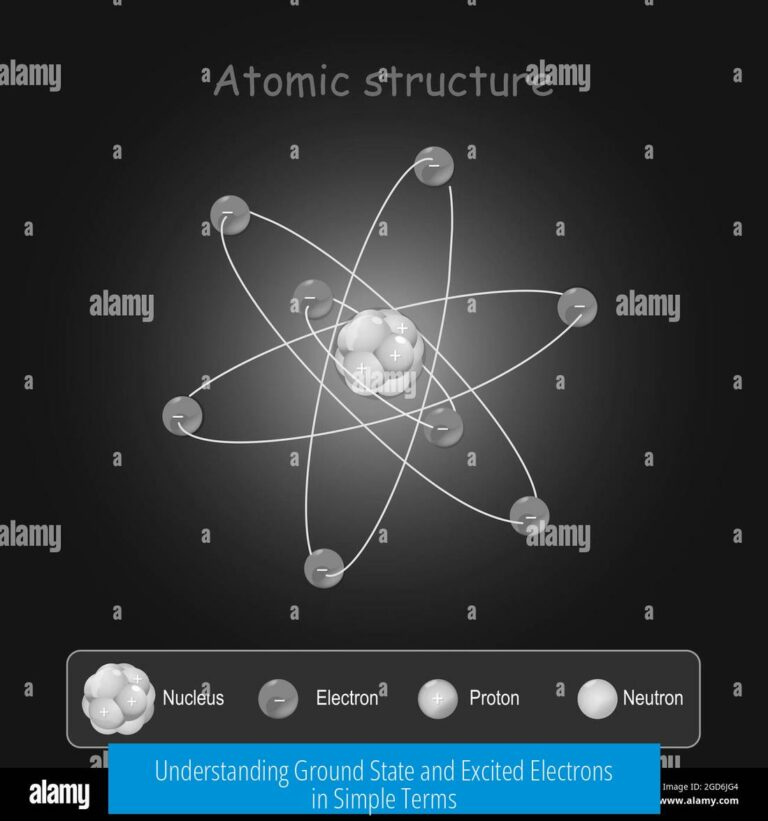Understanding Pi Orbitals in Chemistry

Pi orbitals are formed by the side-on overlap of p orbitals on adjacent atoms, creating pi (π) bonds that exist alongside sigma (σ) bonds in molecules. They provide regions of electron density above and below the bonding axis, playing a critical role in the structure and reactivity of molecules, such as ethene and conjugated dienes like 1,3-butadiene.
1. Fundamentals of Pi Orbitals and Hybridization

Atoms form bonds by combining their atomic orbitals through a process called hybridization. Carbon, for example, can mix its one s orbital and three p orbitals into four equivalent sp3 hybrid orbitals found in alkanes. These four orbitals create sigma bonds when overlapping head-on with orbitals of other atoms.
In molecules with double bonds, like ethene, carbon atoms undergo sp2 hybridization, where only three orbitals mix. This leaves one unhybridized p orbital on each carbon atom. These p orbitals are oriented perpendicular to the plane of the molecule.
Visualizing p orbitals helps: they are dumbbell-shaped electron clouds aligned along the x, y, and z axes. During bond formation, the hybridized orbitals overlap head-on to form σ bonds, while the unhybridized p orbitals can overlap side-on to form π bonds.
2. Pi Orbitals in Ethene (C2H4)

2.1 Formation of Pi Orbitals

In ethene, each carbon is sp2 hybridized, forming three sp2 orbitals used for sigma bonds (two with hydrogens, one with the other carbon). One p orbital remains on each carbon atom. These two p orbitals overlap side-on, creating a pi orbital.
This pi orbital contributes the second bond in the carbon-carbon double bond, alongside the sigma bond formed by sp2 orbitals.
2.2 Geometry and Electron Density
The pi bond creates two regions of electron density: one above and one below the plane of the molecule. This distinct electron distribution is different from the σ bond, which lies directly between the bonded nuclei.
Two electrons occupy this pi bonding orbital, stabilizing the double bond by holding the two carbons together via electron sharing.
2.3 Pi Bonding and Anti-Bonding Orbitals
The pi bonding orbital has continuous electron density above and below the bond axis. If an electron in this orbital gains energy, it can be promoted to a pi anti-bonding orbital, which has a node (a region with zero electron density) between the two nuclei.
This node decreases the overlap and weakens the bond. Hence, anti-bonding orbitals reduce overall bond strength, while bonding orbitals stabilize the molecule.
2.4 Visualizing Pi Orbitals
Consider the dumbbell shapes (p orbitals) on each carbon atom. The lobes aligned along the bonding axis overlap head-on to create the sigma bond. The remaining lobes, aligned perpendicular, face each other side-on.
This side-on overlap forms the pi bond, which cannot be formed by head-on overlap because of the orbital orientation. Thus, pi bonds have a unique spatial orientation leading to distinct molecular shapes and properties.
3. Pi Orbital Delocalization in 1,3-Butadiene
3.1 Extended Pi System
Pi bonding extends beyond two atoms in conjugated systems like 1,3-butadiene. This molecule contains four carbons with alternating single and double bonds.
Each sp2 carbon retains its unhybridized p orbital, which overlaps with p orbitals on adjacent carbons. This creates a delocalized pi electron network spanning multiple atoms instead of being confined between two.
3.2 Delocalized Pi Electron Network
The four p orbitals collectively share four pi electrons (each carbon contributing one). This delocalization distributes electron density over the length of the molecule, enhancing stability and impacting its reactivity.
3.3 Occupation and Energy Levels of Pi Orbitals
Pi orbitals in this extended system arrange themselves into molecular orbitals with varying energies. Some orbitals have no nodes, where all p orbitals are in phase, representing the lowest energy orbital.
Higher energy pi orbitals form when nodes appear between atoms, such as one node in the center of 1,3-butadiene. Electrons fill orbitals from low to high energy. Given four pi electrons, the two lowest energy molecular orbitals are occupied.
4. Summary Table: Sigma vs. Pi Bonds
| Feature | Sigma (σ) Bond | Pi (π) Bond |
|---|---|---|
| Orbital Overlap | Head-on overlap of hybridized orbitals | Side-on overlap of unhybridized p orbitals |
| Electron Density Location | Between the nuclei along bonding axis | Above and below the bonding axis |
| Bond Strength | Stronger, primary bond | Weaker than sigma, adds bond strength |
| Role in Multiple Bonds | Forms the first bond | Forms second and third bonds (double, triple) |
| Energy Levels | Lower energy bonding orbitals | Both bonding and anti-bonding orbitals exist |
5. Practical Importance of Pi Orbitals
- Pi orbitals explain double and triple bond formation in organic molecules.
- Delocalized pi systems impact molecular color, reactivity, and stability, as observed in conjugated hydrocarbons and aromatic compounds.
- Understanding pi bonds is crucial for predicting molecular geometry and electron distribution.
- P-orbital overlap orientation determines bond strength and chemical behavior.
6. Conclusion: Key Points on Pi Orbitals
- Pi orbitals arise from side-on overlap of unhybridized p orbitals in atoms like carbon.
- They complement sigma bonds and provide the second bond in double bonds.
- Electron density in pi bonds lies above and below the bonding plane.
- Pi bonds have bonding and anti-bonding orbitals; excitation weakens the bond.
- In conjugated molecules like 1,3-butadiene, pi orbitals form delocalized electron networks.
- Hybridization determines availability of p orbitals for pi bonding (sp2 leaves one p orbital).
- Visualizing orbital orientation clarifies the difference between sigma and pi bonds.
Unlocking the Secrets of Pi Orbitals: More Than Just Side-On Bonds
Pi orbitals are the unhybridized p orbitals left after sp2 hybridization, which overlap side-on to form pi bonds—those quirky electron clouds dancing above and below the molecule’s plane. But why should you care about these lobed players? What makes pi orbitals essential in chemistry beyond just the textbook definition? Buckle up, because understanding pi orbitals opens the door to the heart of molecular behavior, reactivity, and the magic of conjugated systems.
The Birth of the Pi Orbital: Ethene’s Tale
Think of ethene (C2H4)—that classic double bond exemplifies pi orbital formation beautifully. Instead of four identical sp3 orbitals, each carbon in ethene rolls with three sp2 orbitals, leaving behind one lone p orbital on each carbon. These leftover p orbitals don’t just sit around; they link sideways to create the pi bond. This is nature’s way of multitasking—one sigma bond forms head-on via sp2 orbitals, and the pi bond pops up as a side-on overlap of these charming p dumbbells.
Visualize it like two dumbbells hovering parallel to each other on the y and z axes, unable to merge head-on but perfectly poised for side-by-side handshakes. This setup leads to electron density regions floating both above and below the plane of the molecule—a hallmark of the pi bond. These twin lobes cradling two electrons shape not only the bond but also the properties of the molecule itself.
Pi Bonds Aren’t Perfect: Enter the Antibonding Orbital
Not all pi orbitals lead to stability. If electrons absorb enough energy, they can leap into anti-bonding pi orbitals. Here’s the catch: these anti-bonding orbitals have a “node” — a no-go electron zone smack in the middle of the bond. This discontinuity weakens the bond’s strength. It’s like a rope with a thin spot you love balancing on—it’s liable to snap. This explains why exciting electrons into these orbitals leads to less stable, more reactive molecules. Nature’s balancing act!
Taking the Pi Party Further: Delocalization in 1,3-Butadiene
Why stop at ethene? Let’s expand and look at 1,3-butadiene, a molecule flaunting four carbons with alternating single and double bonds. Here, each sp2 carbon gets that free p orbital, but instead of just bonding with one neighbor, the p orbitals line up and create a delocalized pi electron network stretching across the four atoms.
This network holds four pi electrons in total, donated one each by the carbons. Now, here’s an intriguing twist: these electrons don’t belong to a single bond—they spread out, like chatty neighbors exchanging secrets over a fence, stabilizing the whole molecule via what chemists lovingly call resonance or conjugation.
Within this system, pi orbitals have different energy levels depending on their nodes. The lowest energy pi orbital has no nodes, meaning the orbitals from all carbons wave in-phase. Next up is a higher energy orbital with one node in the middle—imagine flipping one segment upside down, which creates a little electronic “bump.” Since pi orbitals hold a max of two electrons, two orbitals get occupied, balancing stability and reactivity perfectly.
Hybridization: Foundation of the Pi Orbital Playground
To really grasp pi orbitals, you must understand hybridization—a fancy word for how atoms mix their s and p orbitals to shape their bonding behavior. Methane’s carbon goes sp3, forming four identical orbitals ready for single bonds. Ethene’s carbons, on the other hand, go sp2, making three hybrid orbitals to form sigma bonds and reserving one p orbital per carbon for pi bonding.
Visualizing this—the sp2 orbitals spread out in a trigonal planar geometry while the remaining p orbitals sit perpendicular to that plane—helps clarify why pi bonds are different. They don’t result from a direct, head-on mash-up (that’s sigma bonds) but from a side-on overlap of parallel p orbitals.
Why Pi Orbitals Matter: Beyond the Nitpick
Pi orbitals influence everything from molecular shape to how molecules absorb light and react. Their electron clouds waving above and below molecular planes enable double bonds and conjugation, which shape chemical properties like color, flexibility, and reactivity profiles. For instance, the conjugated pi systems in dyes let them absorb visible light, showing us vibrant colors rather than just the usual “invisible” UV.
On a practical note, delocalized pi orbitals also stabilize reactive intermediates in chemical reactions, guiding chemists who want to build medicines or materials people rely on daily. So pi orbitals are quiet heroes, making sure chemistry does its thing reliably.
Summing It Up with Visual Flair
- Pi orbitals originate from unhybridized p orbitals leftover after sp2 hybridization; they don’t mix into the sigma bond framework directly.
- They produce electron clouds above and below the molecular plane, forming the pi bond that complements the sigma bond in double bonds.
- Side-on overlap of dumbbell-shaped p orbitals creates the pi bond—different from the head-on sigma overlap.
- Anti-bonding pi orbitals feature a nodal plane, which reduces bond strength and represents excited states of the molecule.
- Delocalization across multiple atoms in molecules like 1,3-butadiene creates a network of pi electrons with distinct energy orbitals, explaining resonance and conjugation.
- Understanding pi orbitals unlocks insights into molecular geometry, reactivity, and material properties.
Next time you hear “pi orbitals,” picture a dynamic dance of parallel dumbbells, electrons buzzing side-on above and below bonds. Not just a boring chemical detail, these orbitals define the very fabric of organic molecules and their behavior. Curious to experiment? Look at how conjugated pi systems change color or reactivity, and you’ll see pi orbitals in action. Chemistry just got a bit cooler.
What role do pi orbitals play in the double bond of ethene?
In ethene, each carbon forms three sp2 orbitals, leaving one unhybridized p orbital. These leftover p orbitals overlap side-on to form the pi bond. This pi bond is the second bond in the carbon-carbon double bond.
How is electron density distributed in a pi bond?
The pi bond has two regions of electron density, located above and below the plane of the molecule. Two electrons occupy this region, creating a distinct shape different from sigma bonds.
What happens when an electron in a pi bonding orbital gains energy?
When an electron in a pi bonding orbital is excited, it can move to an anti-bonding orbital. This anti-bonding orbital has a node with no electron density between atoms, reducing bond strength.
How do pi orbitals form differently than sigma orbitals?
Sigma bonds form by head-on overlap of orbitals along the bond axis. Pi bonds arise from side-on overlap of parallel p orbitals that cannot merge head-on due to their orientation.
What is the significance of pi orbital delocalization in molecules like 1,3-butadiene?
In 1,3-butadiene, the unhybridized p orbitals on four sp2 carbons overlap to form a delocalized pi electron network. This spreads electrons over multiple atoms, stabilizing the molecule and filling orbitals from lowest to higher energy.





Leave a Comment